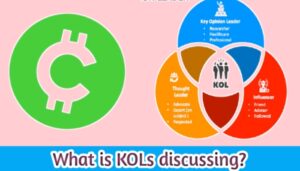Small and Medium Enterprises (SMEs) are the backbone of many economies, contributing significantly to employment, innovation, and GDP. Small and Medium Enterprise Loan However, one of the biggest challenges SMEs face is access to finance. Banks and financial institutions provide SME loans to help businesses grow, manage cash flow, purchase equipment, or expand operations.
SME loans are specifically designed to meet the needs of small and medium-sized businesses, with flexible terms and repayment structures compared to traditional corporate loans.
1. What is a Small and Medium Enterprise (SME)?
SMEs are businesses that fall within certain size criteria based on employee numbers, annual revenue, or capital investment. These criteria may vary by country.
Typical Definition Table:
| Parameter | Small Enterprise | Medium Enterprise |
|---|---|---|
| Employees | 10–50 | 50–250 |
| Annual Revenue | $100,000–$2 million | $2 million–$10 million |
| Capital Investment | Low to moderate | Moderate |
SMEs are crucial for economic growth because they foster innovation, create jobs, and support local communities.
2. Importance of SME Loans for Business Growth
SME loans provide businesses with the capital needed to grow and operate efficiently. Benefits include:
- Expansion: Opening new branches or markets.
- Cash Flow Management: Cover day-to-day operational costs.
- Equipment Purchase: Buy machinery, vehicles, or technology.
- Working Capital Support: Smooth operations during seasonal demand fluctuations.
3. Types of SME Loans
| Loan Type | Description | Use Case Example |
|---|---|---|
| Term Loans | Fixed amount borrowed for a specific period at a fixed or floating interest rate. | Opening a new production unit. |
| Working Capital Loans | Short-term loan to manage day-to-day expenses. | Paying salaries during low sales months. |
| Equipment Financing | Loan to purchase machinery or equipment, often collateralized by the asset. | Buying a new packaging machine. |
| Invoice Financing | Borrowing against outstanding invoices to improve cash flow. | Receiving payment upfront for delivered goods. |
| Trade Finance | Support for import/export activities. | Paying overseas suppliers for raw materials. |
4. Eligibility Criteria for SME Loans
Eligibility requirements vary by lender, but common criteria include:
- Minimum years of business operation (usually 1–3 years)
- Positive business financial statements
- Good credit history
- Business plan and projections
- Legal registration of the business
5. Required Documentation for Loan Application
Typical documentation includes:
- Business Registration Certificates – Proof of legal existence
- Financial Statements – Balance sheets, profit & loss statements
- Bank Statements – Usually past 6–12 months
- Tax Returns – For both business and owner
- Loan Purpose Details – How the loan will be used
- Collateral Documents – If the loan requires security
6. How to Apply for an SME Loan
- Research and choose the right lender.
- Prepare all required documentation.
- Submit the loan application online or at the bank.
- Lender reviews the application, financials, and collateral.
- Loan approval, sanction, and disbursement.
7. Interest Rates and Loan Tenure
Interest rates depend on:
- Business creditworthiness
- Loan type and tenure
- Lender policies
Example Table – SME Loan Rates:
| Loan Type | Interest Rate Range | Typical Tenure |
|---|---|---|
| Term Loan | 8–15% p.a. | 1–5 years |
| Working Capital Loan | 10–18% p.a. | Up to 1 year |
| Equipment Financing | 9–14% p.a. | 2–5 years |
| Invoice Financing | 12–20% p.a. | Short-term (up to 6 months) |
8. Role of Collateral in SME Loans
Collateral reduces the lender’s risk. It can be:
- Property
- Machinery or equipment
- Inventory
- Accounts receivable
Loans without collateral, also called unsecured SME loans, are available but usually have higher interest rates.
9. Government Schemes and Support for SMEs
Many governments provide schemes to help SMEs access affordable credit:
- Loan Guarantee Programs: Government guarantees a portion of the loan, reducing risk for lenders.
- Subsidized Interest Rates: Lower rates for eligible SMEs.
- Specialized Funds: Targeted at women entrepreneurs, startups, or export-oriented SMEs.
Example Table – Government Support:
| Scheme | Purpose | Benefit |
|---|---|---|
| SME Credit Guarantee | Provides collateral-free loans | Easier approval for small businesses |
| Subsidized Interest Scheme | Reduce borrowing costs | Lower interest rates (2–5% subsidy) |
| Export Financing Scheme | Support export-oriented SMEs | Faster approval and working capital |
10. Advantages of SME Loans
- Access to capital for growth
- Flexibility in repayment and tenure
- Opportunity to build business credit history
- Enhance competitiveness by investing in technology or infrastructure
11. Risks and Challenges of SME Loans
- High interest rates for unsecured loans
- Risk of default if business cash flow is unstable
- Over-leveraging may strain finances
- Collateral risk for secured loans
12. Choosing the Right Lender for Your SME
Factors to consider:
- Reputation: Established banks or NBFCs (Non-Banking Financial Companies)
- Interest Rate: Compare multiple lenders
- Processing Time: Quick disbursal is critical for working capital needs
- Customer Support: Assistance during repayment or restructuring
13. Alternative Financing Options for SMEs
- Angel Investors or Venture Capital – Equity-based financing
- Crowdfunding Platforms – Raise funds from a group of investors
- Microfinance Loans – Small loans for micro and small businesses
- Trade Credit – Extended payment terms with suppliers
14. Tips for Improving Loan Approval Chances
- Maintain a good credit score
- Prepare a strong business plan
- Keep financial statements accurate and updated
- Provide collateral if required
- Demonstrate consistent revenue or sales growth
15. Impact of SME Loans on Business Growth
SME loans can:
- Increase production capacity
- Improve liquidity and cash flow
- Facilitate expansion into new markets
- Enhance operational efficiency through investment in technology or equipment
16. Repayment Strategies for SME Loans
- Regular EMI Payments: Ensures timely repayment and good credit history
- Flexible Repayment Plans: Align repayment with cash flow cycles
- Early Repayment: Reduces interest burden if business generates surplus cash
- Debt Consolidation: Combine multiple loans for easier management
17. Case Studies of Successful SME Financing
Example 1: A small bakery in India took a working capital loan to expand production. Within 12 months, revenue doubled, enabling them to open two new branches.
Example 2: A manufacturing SME used equipment financing to buy modern machinery. Production efficiency improved by 30%, resulting in higher profits and quicker loan repayment.
18. Common Mistakes to Avoid When Taking an SME Loan
- Borrowing more than needed
- Ignoring repayment schedule and interest calculations
- Not understanding loan terms and fees
- Failing to maintain proper business records
- Choosing lenders solely based on low-interest rates
19. Future Trends in SME Financing
- Digital Lending Platforms: Faster online approvals
- Fintech Integration: AI-based credit assessment and personalized loans
- Green Financing: Loans for environmentally sustainable businesses
- Flexible Repayment Products: Aligning repayments with revenue cycles
20. Conclusion:
Small and Medium Enterprise Loan SME loans are a critical tool for business growth, expansion, and operational stability. While there are risks, careful planning, proper lender selection, and responsible borrowing can help SMEs achieve their financial goals.
By understanding loan types, eligibility, documentation, interest rates, and repayment strategies, business owners can make informed decisions and leverage finance effectively for long-term success.

















